Brown Anole is a small brown or greyish lizard that belongs to the Dactyloidae family and is endemic to Cuba and the Bahamas. This lizard is also known by the names – Anolis sagrei, Bahaman anole, and De la Sagra’s anole. This highly invasive reptile species achieve extraordinarily high densities of population, without the chance of endangerment. By being marketed as a pet lizard, Brown Anole is quickly increasing its range and is now present in distinctive areas of the world.
These lizards are strong and have a short wide head and snout with varying body colors. Sometimes when it feels jeopardized, they change the color of their body according to the surroundings. Not just this, but brown anole lizards also have a few more fascinating details that make them stand out uniquely from other lizards. So let’s discuss Brown anoles and their impact on the ecosystem.
History
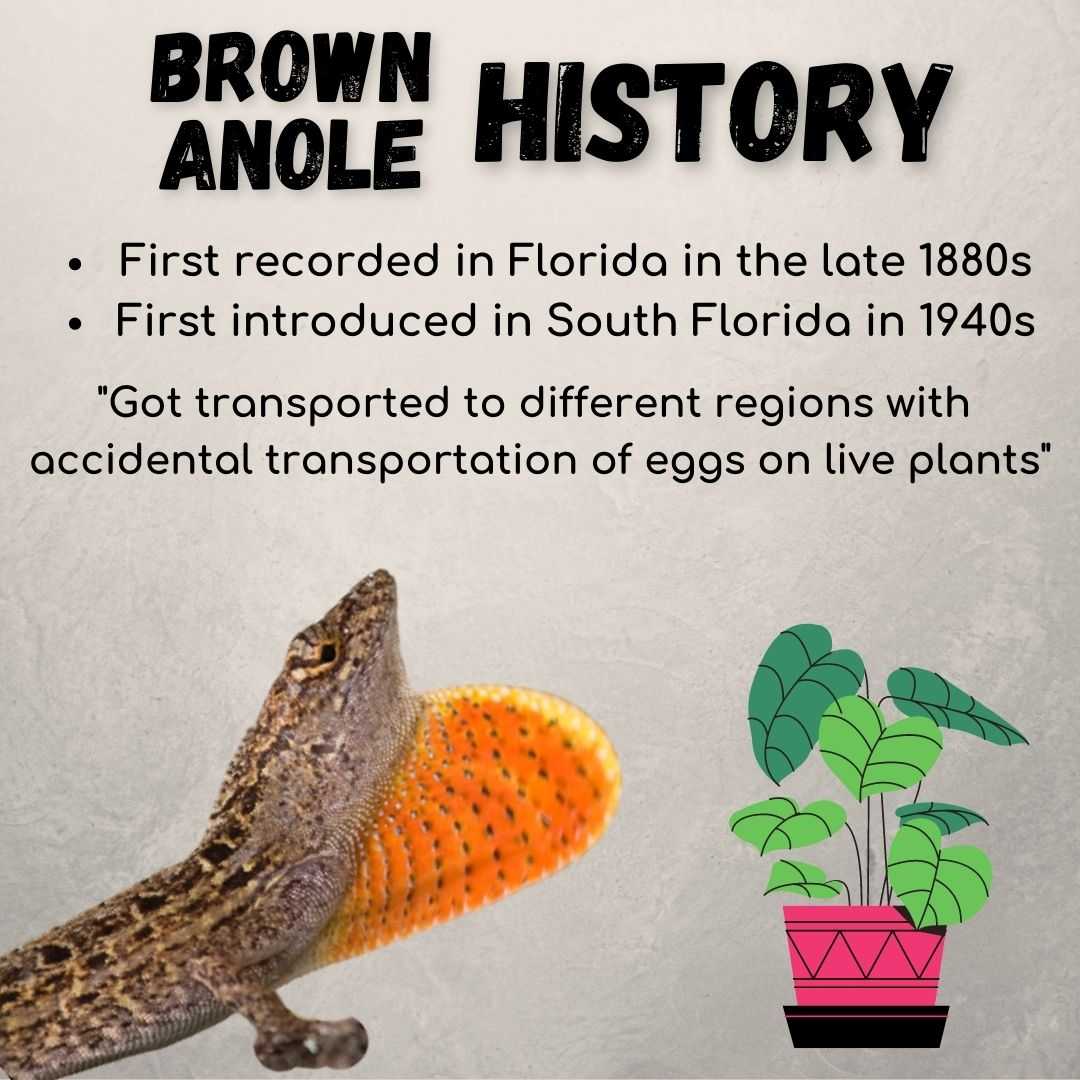
Brown Anole was first recorded in Florida in the late 1880s and was introduced in South Florida by the 1940s. Although brown Anoles were well known in Georgia for decades, specimens were collected from Houston in 1987. Habitat range extension has been helped by unintended transportation via ships and airplanes.
Their “eggs being unintentionally transported with live plants to various countries” has been suggested as the likely source of the expansion of this lizard breed. Brown Anoles were introduced to the areas of Georgia, Houston, and Texas by escapes made by a few Brown Anole pets.
Geographical Range
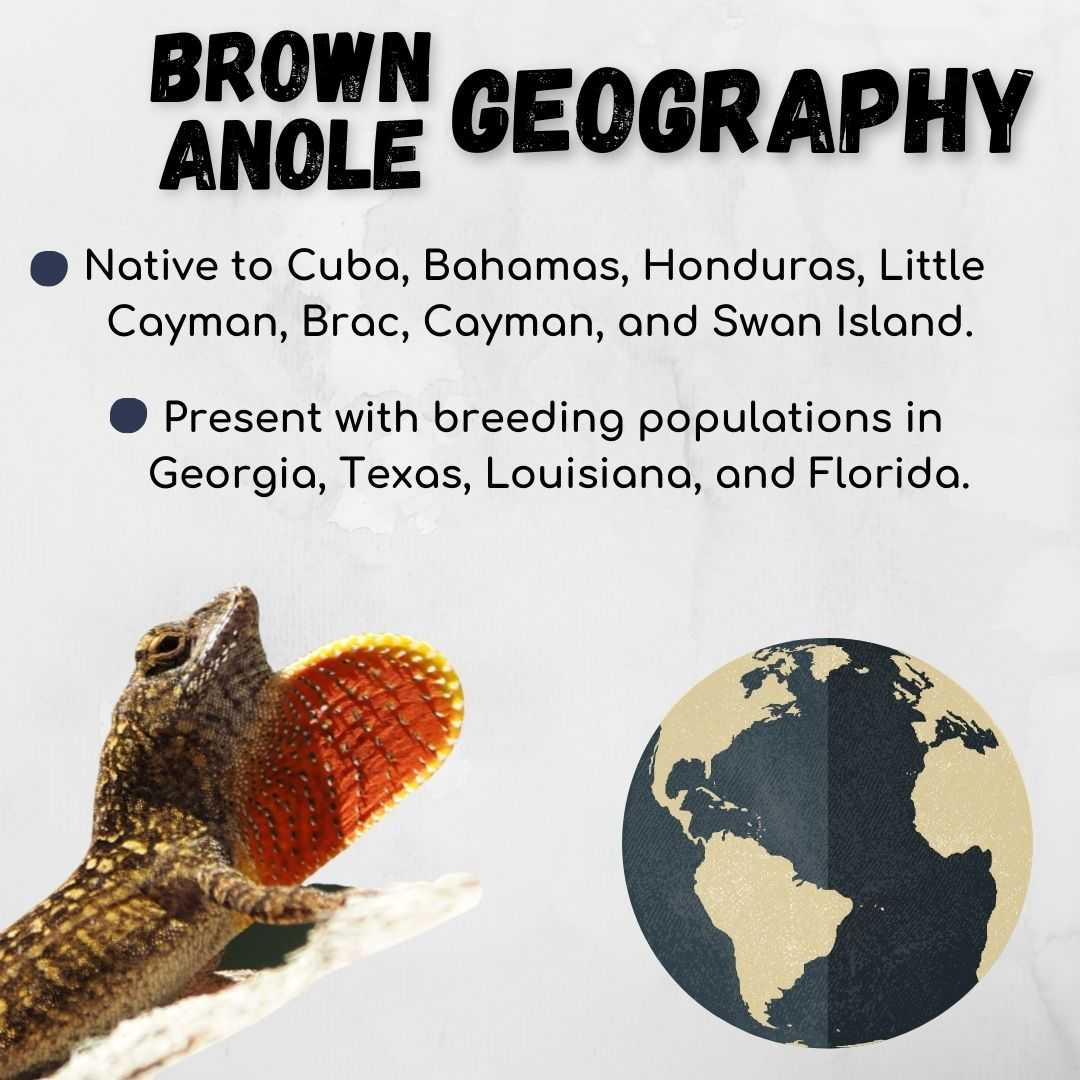
Brown Anoles are native to Cuba, Bahamas, Honduras, Little Cayman, Brac, Cayman, and Swan Island. They are also present with breeding populations in Georgia, Texas, Louisiana, and Florida and have also recently been seen in Southern Alabama. This specie is expected to continue northward expanding its range in the coming years.
Habitat
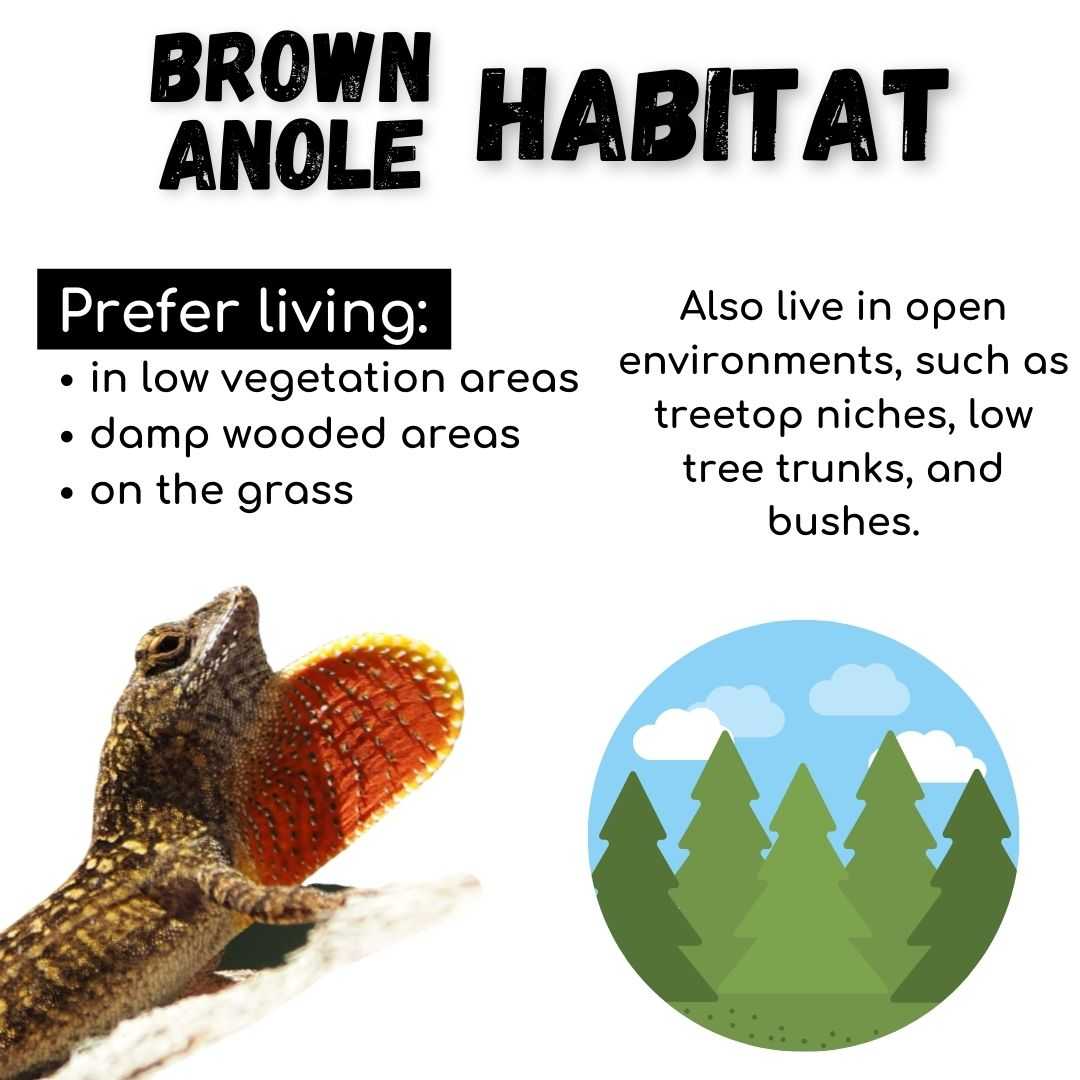
Brown Anoles are normally less arboreal than other species of lizards and typically tend to spend much of their time on the grass or in low vegetation, and damp wooded areas where they easily hide against the background of bark and dead leaves. They often live in open environments, such as treetop niches or low tree trunks, and are readily adapted in urban areas. In addition, the Brown Anole establishes its territories among the bushes, walls, shrubs, and trees.
Physical Appearance
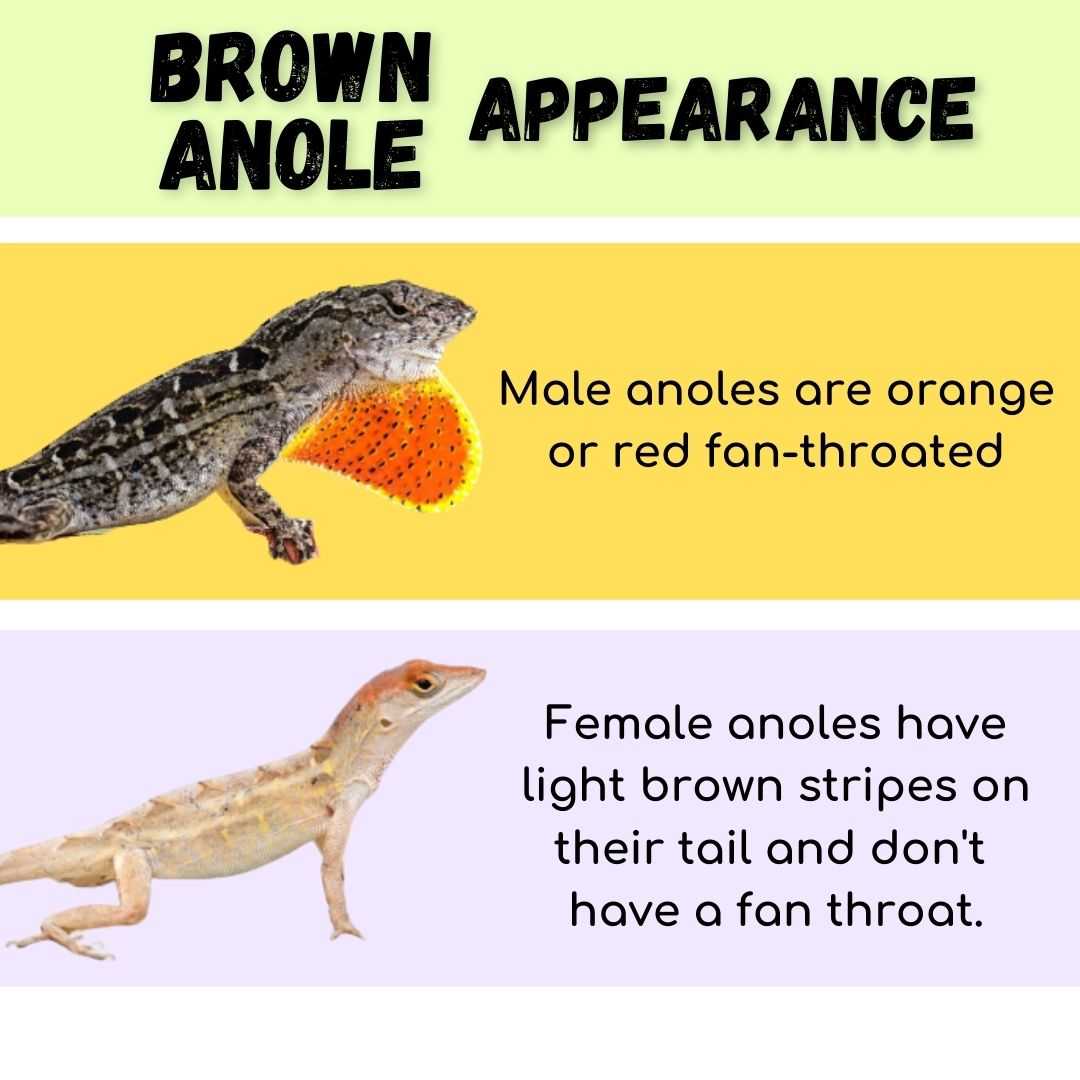 With a relatively large head, Brown Anole is fairly sturdy, entirely coated with tiny scales. Compared to other anole species it has a notably short snout. Its long claws and toes help her sprint, leap and climb tree logs. In addition, its feed pads contain millions of microscopic fibers which allow it to climb any surface like trees, walls, ceilings, etc.These lizards range from brown to grayish, generally with yellowish and whitish patterning on the back, and dark to light color lines on the sides.
With a relatively large head, Brown Anole is fairly sturdy, entirely coated with tiny scales. Compared to other anole species it has a notably short snout. Its long claws and toes help her sprint, leap and climb tree logs. In addition, its feed pads contain millions of microscopic fibers which allow it to climb any surface like trees, walls, ceilings, etc.These lizards range from brown to grayish, generally with yellowish and whitish patterning on the back, and dark to light color lines on the sides.
Male anoles are orange or red fan-throated with whitish edges and blackish dots on them. Female anoles, on the other hand, have a light brown stripe on their back, through which males and females can be distinguished.
Brown Anoles will change their body’s colour too, from dark brown to black or vice versa. They have a ridge on their tails that travels till the head.
Size, Weight, Lifespan
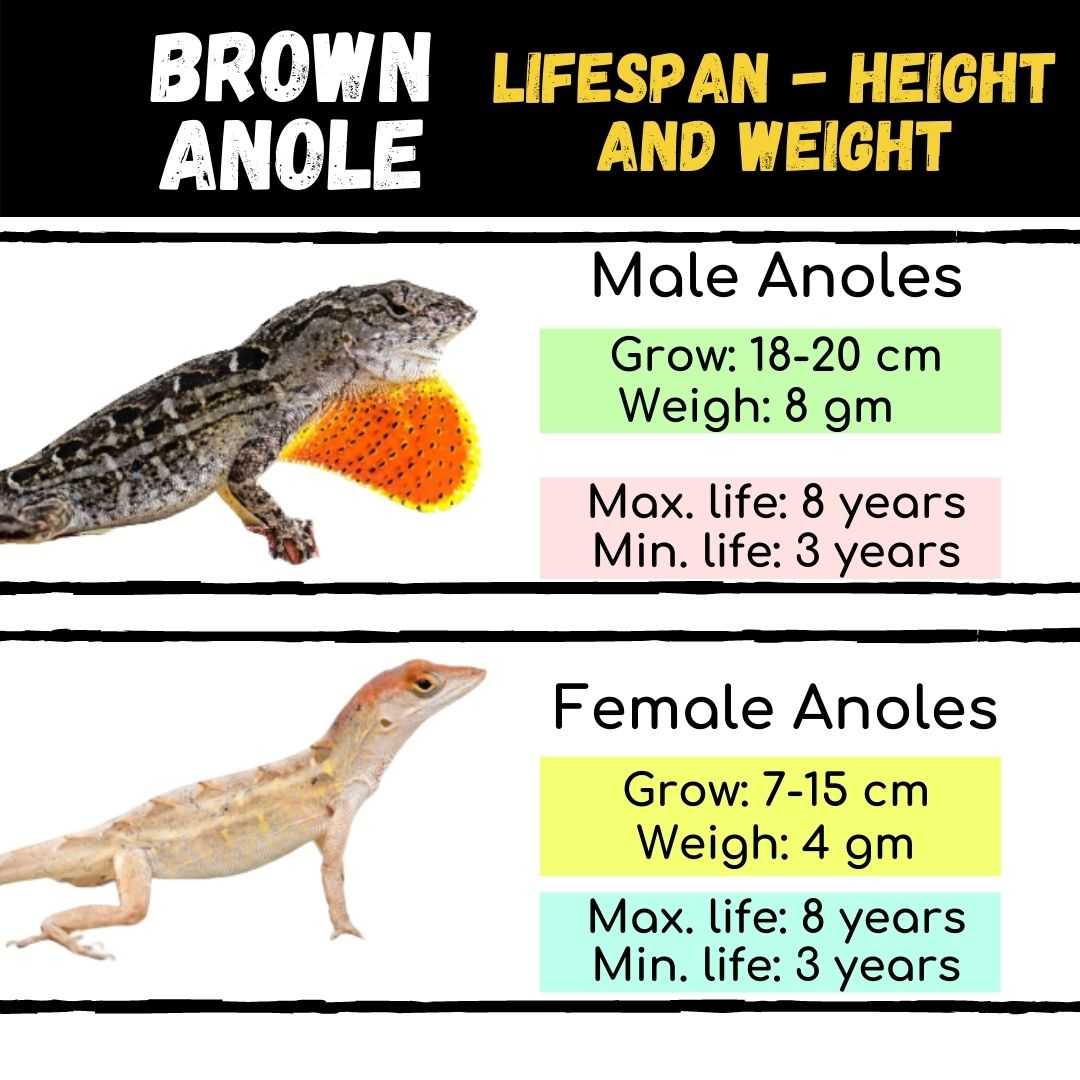
Males are larger than females, both in height and weight. Male anoles grow to roughly 18 to 20 cm (7-8 inches) and weigh about 8 grams. Female anoles grow between 7-15 cm (3-6 inches) long with 4 grams of weight.
Brown Anole can live in the wild for up to 5 years, and in captivity for 8 years. Their average captive life cycle is about 3 to 4 years.
Behavior
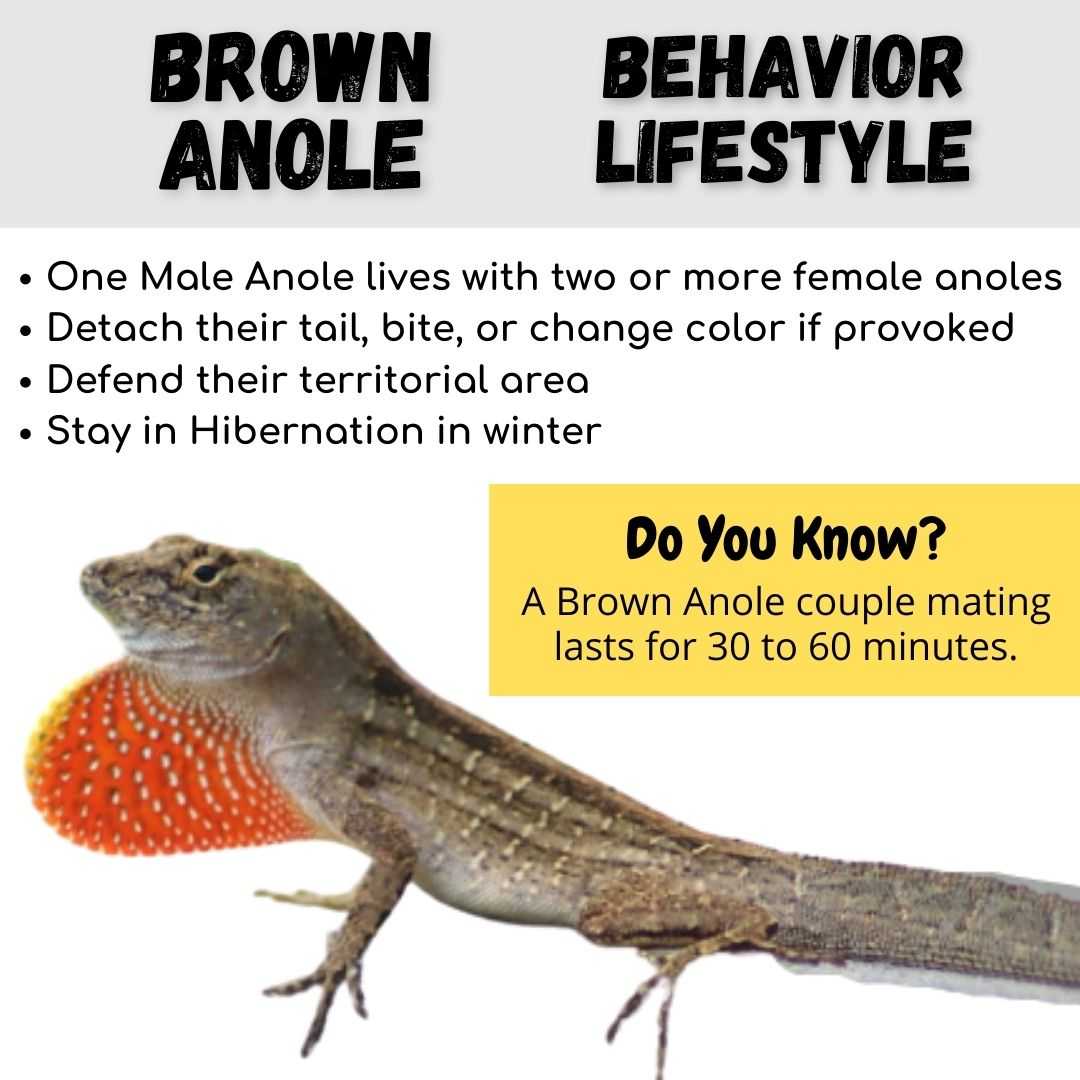
Brown Anoles are friendly, share territories about the size of a large forest area, and suggest living in groups. Males and females have separate territorial distributions. However, two or more females are involved in one male’s territory.
Male brown anoles spend most of their time in displaying their dewlaps and bobbing their heads in tandem with other anoles, searching for females to mate with or spotting other rival males that have encroached in their territory.
Brown anoles remain in hibernation in the winter season and are strongly possessive to defend their territorial area. When feeling threatened or tried to get pursued or captured by predators, they detach their tail from their body, to distract the predator and allowing themselves to escape. Moreover, brown anoles will also change their colors, defecate, urinate, and bite if provoked or tried to touch.
Diet & Nutrition
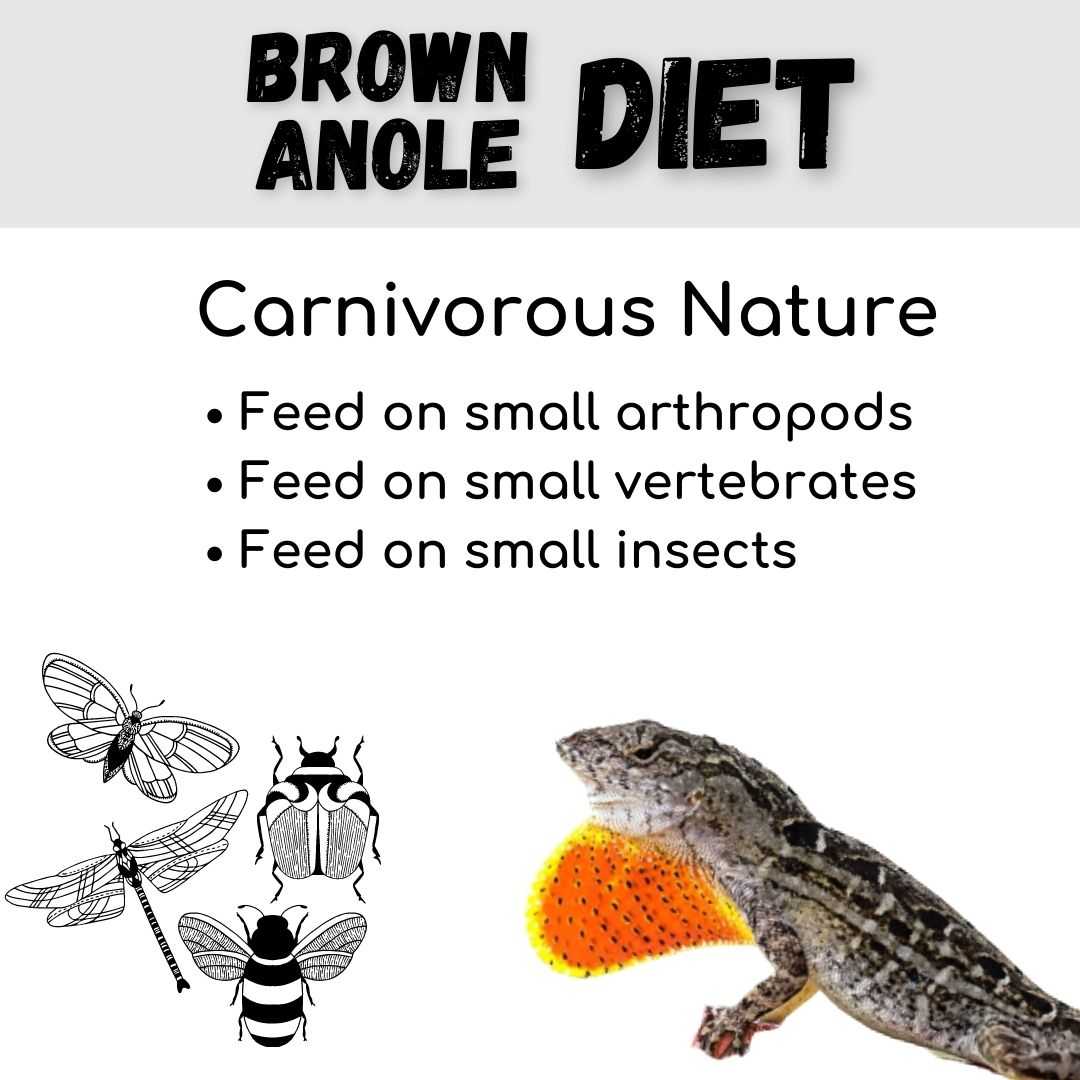
Brown Anoles have a carnivorous nature. They feed on small arthropods such as spiders, amphipods, isopods, crickets, ants, cockroaches, grasshoppers, moths, waxworms, beetles, butterflies, flies, and mealworms. They also eat other vertebrates such as small lizards, the Carolina and Skink anoles, lizard’s eggs, molted skins, and detached tails — nearly anything that fits up in their mouth.
Mating & Reproduction
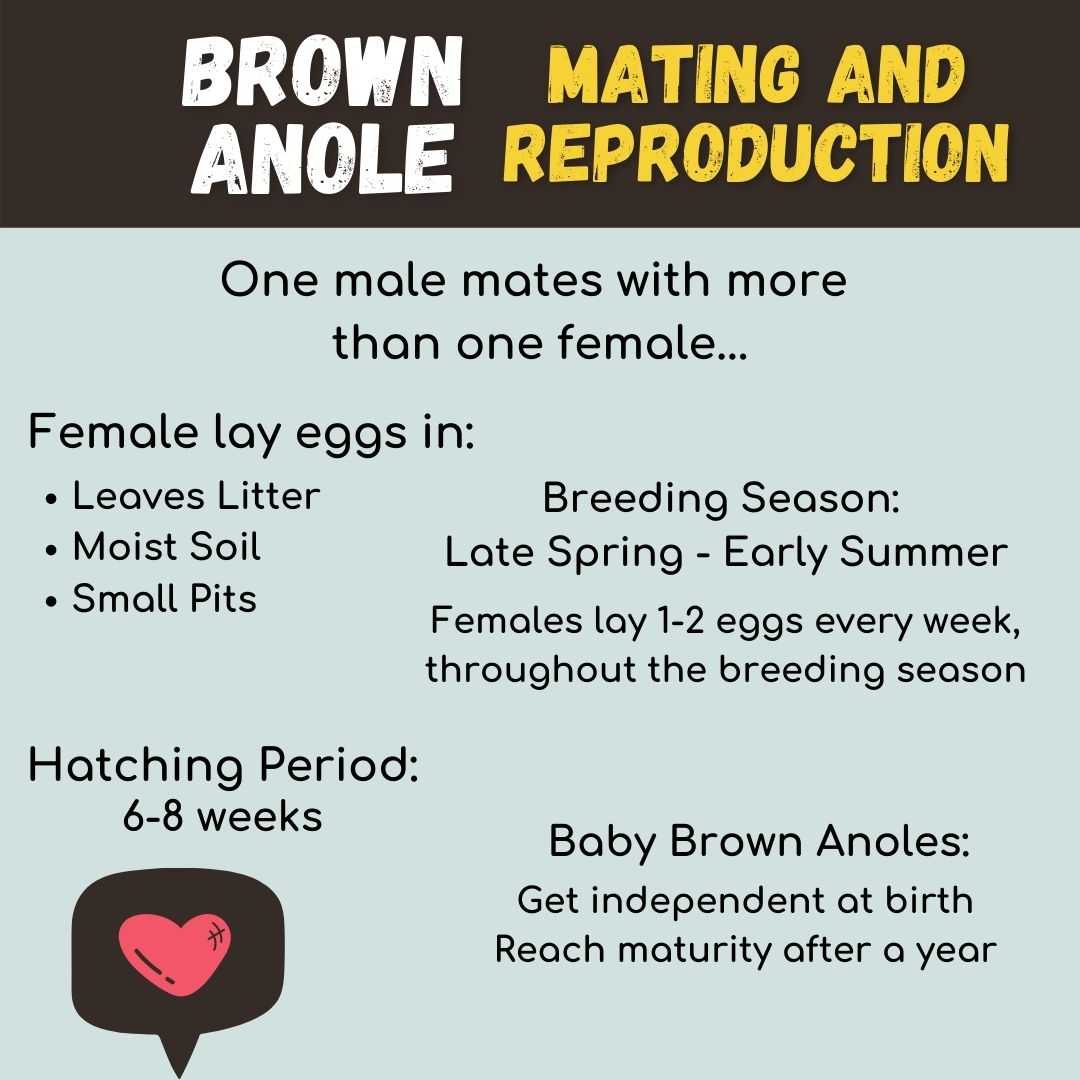
Brown anoles are polygynous, meaning one male mates with more than one female. After mating with male anoles, female anoles tend to find a suitable place in moist soil, dead leaves litter or dig a small pit, for laying their eggs.
Females generally lay around 1 or 2 eggs in every one or two weeks throughout the breeding season, in late spring and early summer. Hatching takes around 6-8 weeks. Baby brown anoles are independent at birth and fast developers and reach their maturity age after 1 year.
Ecosystem Roles
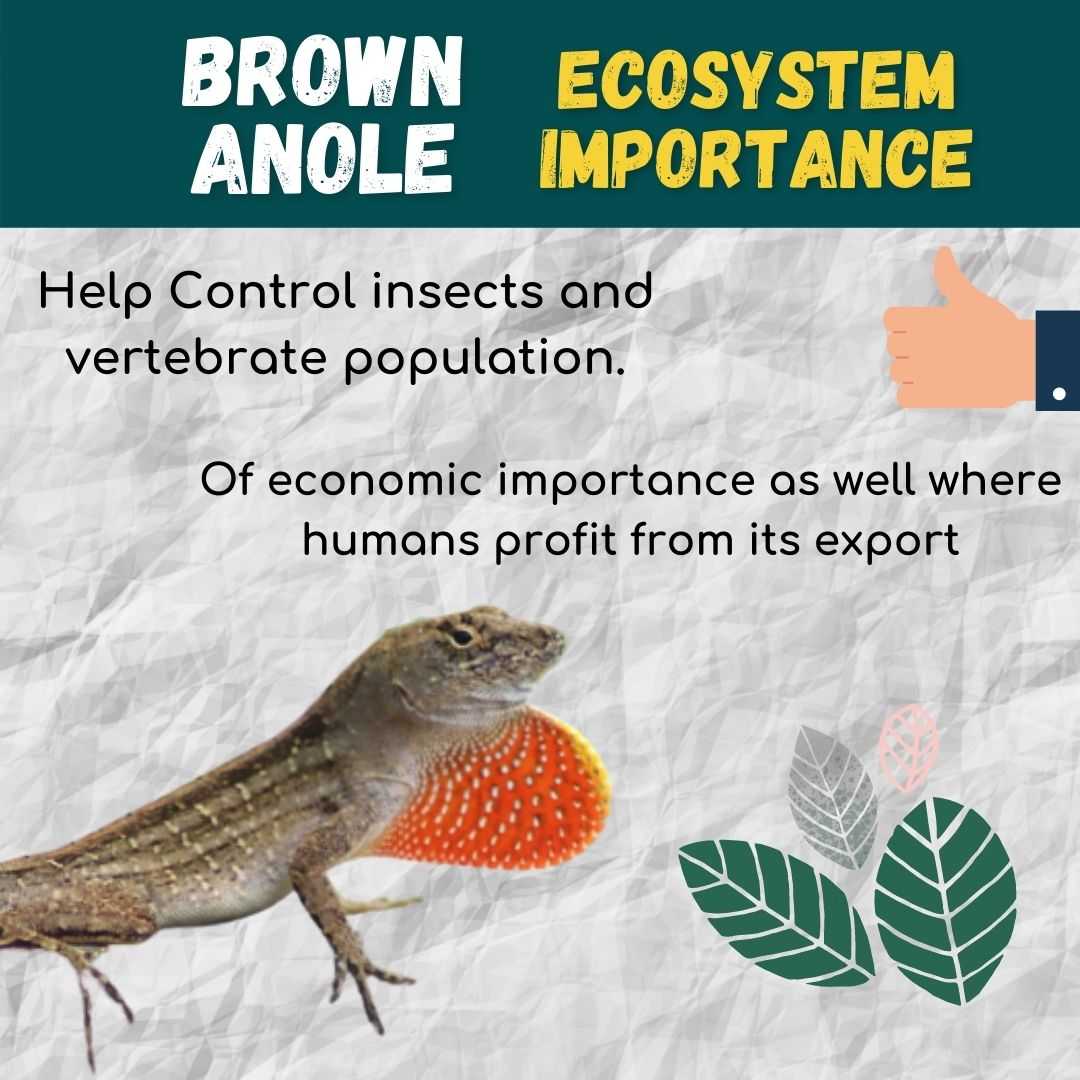
Brown Anoles have great importance in controlling several insects and vertebrate populations. In fact, it was discovered that if lizards were removed from the world, it would result in an increased population of insects and spiders, and a decline in the population of those animals that feed on lizards such as the American Badger.
Since the Brown Anole has become popular among pet lizard owners, it is of economic importance as well where humans profit from the pet trade – exporting the lizard to several countries.
Interesting Facts
- Brown Anole is a Lizard.
- They are native to Cuba and the Bahamas.
- Brown Anoles are highly invasive.
- With time, it is reaching too high population densities.
- They can change their colors.
- Brown anoles have dewlaps ranging from orange-red to yellow.
- Female anoles have a pattern with diamonds, bars, and a stripe running across their back.
- They are carnivorous in nature and belong to the family of Dactyloidae.
- They are considered as one of the least endangered lizard species.
- Male anoles are bigger than female anoles.
- They can survive for 3-8 years.
- Brown anoles are polygynous in nature.
- They usually prefer to live near the ground.
- Their coloration helps them to camouflage.
- They can even detach their tail if feel threatened.
- A Brown Anole couple mating lasts for 30 to 60 minutes.







